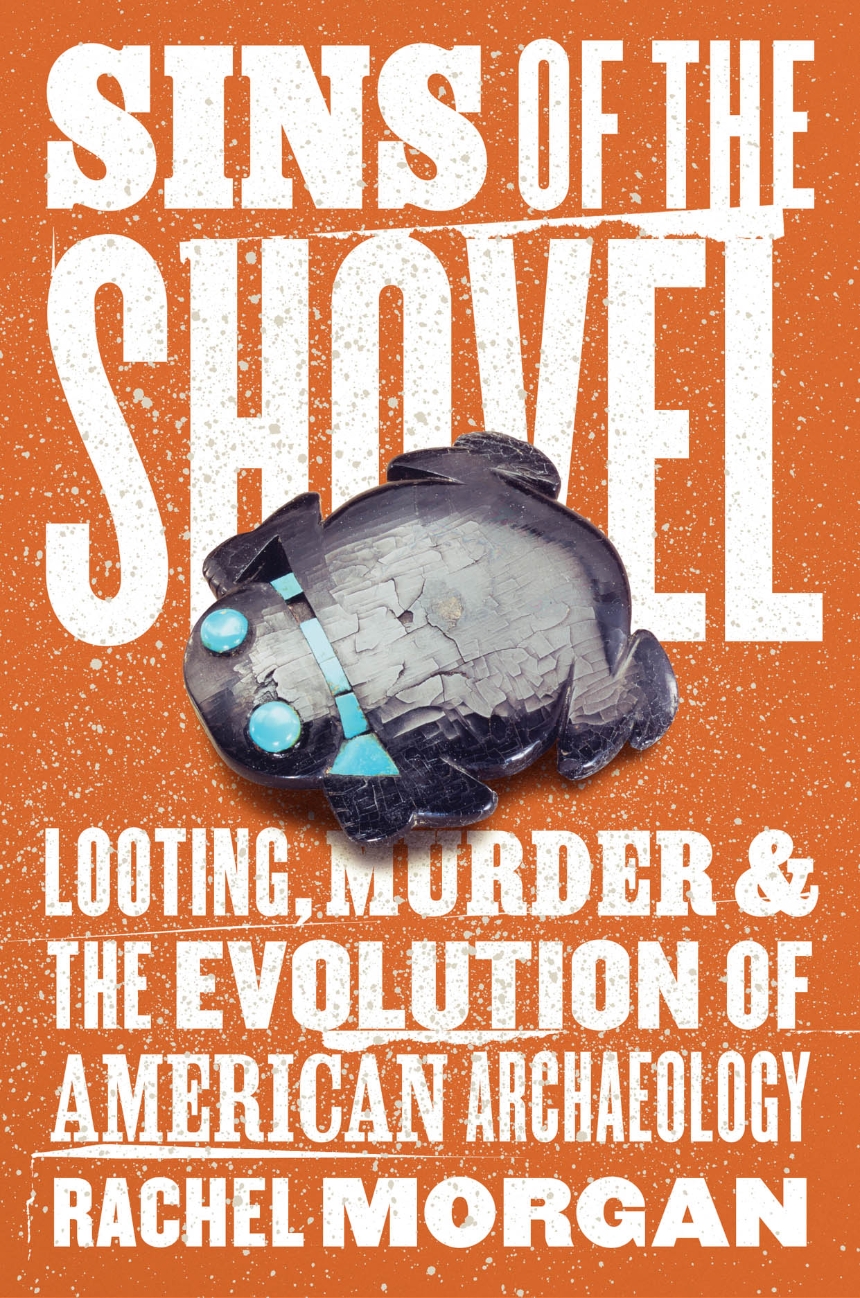Sins of the Shovel
Looting, Murder, and the Evolution of American Archaeology
Sins of the Shovel
Looting, Murder, and the Evolution of American Archaeology
American archaeology was forever scarred by an 1893 business proposition between cowboy-turned-excavator Richard Wetherill and socialites-turned-antiquarians Fred and Talbot Hyde. Wetherill had stumbled upon Mesa Verde’s spectacular cliff dwellings and started selling artifacts, but with the Hydes’ money behind him, well—there’s no telling what they might discover. Thus begins the Hyde Exploring Expedition, a nine-year venture into Utah’s Grand Gulch and New Mexico’s Chaco Canyon that—coupled with other less-restrained looters—so devastates Indigenous cultural sites across the American Southwest that Congress passes first-of-their-kind regulations to stop the carnage. As the money dries up, tensions rise, and a once-profitable enterprise disintegrates, setting the stage for a tragic murder.
Sins of the Shovel is a story of adventure and business gone wrong and how archaeologists today grapple with this complex heritage. Through the story of the Hyde Exploring Expedition, practicing archaeologist Rachel Morgan uncovers the uncomfortable links between commodity culture, contemporary ethics, and the broader political forces that perpetuate destructive behavior today. The result is an unsparing and even-handed assessment of American archaeology’s sins, past and present, and how the field is working toward atonement.
328 pages | 10 halftones | 6 x 9 | © 2023
History: American History, Discoveries and Exploration
Reviews
Table of Contents
1 A Palace in the Sky
2 The Robber Baron
3 All the World’s a Fair
4 Toward the Grand Gulch
5 Whence and Whither
6 Bonito, 1895
7 Cacao and Turquoise
8 Return to the Grand Gulch
9 The Trade
10 Digging Deeper
11 Death by Committee
12 Anni Horribiles
13 All’s Fair . . . St. Louis, 1904
14 An Act for the Preservation of American Antiquities
15 The Race for Rainbow Bridge
16 “On the Borderland of Hell”
17 Where the Red Rocks Run Under
18 Back to the Gulch, Again
19 New Deal, New Archaeology
20 From Potsherds to Process
21 The Grand Gulch under Fire
22 People without Names
23 Repatriation
24 The Past
Epilogue
Acknowledgments
Notes
Bibliography
Index
Excerpt
It was cold and the cattle were nowhere to be seen. As the branches and brambles cut into the legs of both the men and the horses, they had to ask themselves: where are we?
Terra incognita would be the optimistic, adventurous response. But others had been there before. Richard’s little brother Al traversed the area a year or so earlier, and he was not the first.
Beginning in 1882, Virginia Donaghe, a New York journalist, explored the region. A wealthy woman in her early twenties, she had accepted a job with the New York Daily Graphic to report on “buried cities.” Her hair often fell in a fashionable pile of tight curls, her sharp features reflecting a seriousness and drive that few underestimated. She discovered no buried cities on her first venture, but she did spot the cliff dwellings of the Mesa Verde region.
During a later visit, she had to hide in the canyons of Colorado for days. She was hungry, thirsty, and weary. A fall from a cliff had nearly ended her life, but Virginia was not deterred. She stood in view of the cliff dwellings. The red towers and rooms that rose out of the past mesmerized her and fortified her against the elements and her enemies.
Pictures of the cliff dwellings had circulated since William Henry Jackson photographed the ruins in the 1870s, but with the railroad in its infancy and no roads nearby, few got to enter the monuments as Virginia did.
Few who looked like Virginia, that is. The “hostile” Indigenous peoples she hid from and their ancestors had known of Mesa Verde for centuries, but they were no longer welcome in Colorado. In 1876, Colorado’s first governor rode to electoral victory on the slogan: “Get the Utes out of Colorado.” Three years later, a sheriff ’s posse killed a young Ute named Tabernash. In return, some Ute inflicted a series of bloody reprisals on White settlers and agents. The entire Ute Tribe did not commit the crimes, but the entire tribe paid. They were driven out of Colorado to new reservations, leaving their much- coveted lands to settlers, railroads, and miners.
In their absence, the local papers declared that “the Utes are gone, and the white man is here. . . . The wigwam of the savage has passed away, and the cabin of the pale face marks the beginning of a new era and a new history.”
Virginia admired the antiquity and beauty of the cliff houses, but she also saw their vulnerability. She wrote of Colorado, “To mighty multitudes her wealth she yields, As shifting seasons pass and years increase.” Trains and legislation favorable to homesteading threw Colorado wide open. It was only a matter of time before the new arrivals laid siege to the ancient cliff dwellings. Virginia felt the artifacts and architecture of Mesa Verde were one type of resource that should never be tapped. The cliff dwellings of Mesa Verde needed to be preserved and protected. Come hell or high water, Virginia Donaghe was going to see that they were.
Awards
Society for American Archaeology: Society for American Archaeology Book Award
Won
